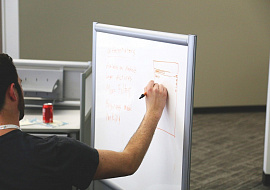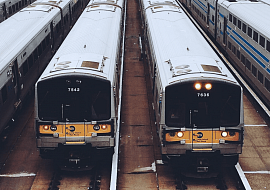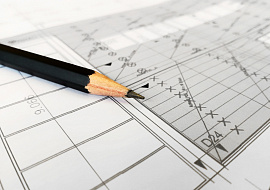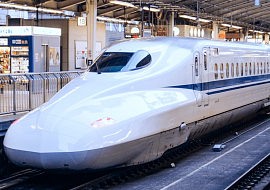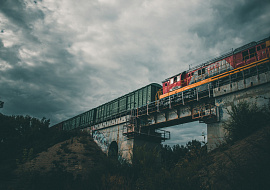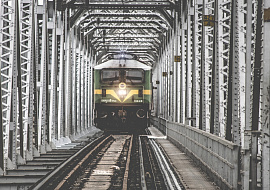For every small change to be accepted within a project, there is plenty of bureaucracy to move through. The larger the project, the more parties are involved in it, which requires more time and resources to make a change in the documentation.
How do you seamlessly upgrade a Rail Signaling System?
Despite continuing to work properly, the question is “how hard is it for operators to maintain the legacy railroad, and how also how safe is it?” We still continue to encounter manual railroad switches throughout the U.S., especially on unloaded railroads. However, since the merging of railroads and the trend of digitalization appears, outdated railroads are becoming fewer and farther between. For modern main and regional railroads, as well as metro and commuter rail, safety remains a top priority with modernization. It forces rail companies to pay special attention to upgrading the rail signaling system. How can you increase the level of safety by implementing new interlockings? How do you connect it with the legacy equipment? How could you make the whole modernization process seamless without interrupting the transportation processes? Read on as we continue to explore these topics throughout the article below.
Rail Signaling System: common ways of modernization
Since a signaling system is responsible for tracking the location of the trains, their directions, warning about the possible issues and occupied tracks, as well as schedule changes in case of passenger transportation, the upgrading of the rail line should contribute to the following:
- Improving the reliability of the equipment
- Minimizing train delays
- Increasing the rail line’s capacity
Actually, these three points are interdependent. By modernizing rail equipment and implementing highly technological tools to maintain it, the company can identify potential issues more precisely that will decrease the number of signaling failures. Reduction of failures naturally leads to decreasing the number of train delays and increasing lines’ capacity. By taking advantage of all these benefits, companies increase the safety level within the whole railroad, reduce expenses on regular maintenance, and accelerate business operations.
To upgrade the rail signaling system, companies usually decide on implementing CBTC and making the system maximally automated. CBTC is a power-consuming solution that also increases the performance and can more easily recover after signaling failure. By choosing the new technologies for operating and maintaining equipment, it becomes easier to decrease the expenses of the whole lifecycle. However, it still remains a challenge how to move to the new rail signaling system on the operating line without sacrificing safety. The hardest challenge comes on the overloaded metro lines or commuter rail but still remains feasible. The signaling team in this scenario needs to consider all the details, possible issues, and connections with other subsystems when it comes to realizing correspondent drawings for a new signaling architecture.
Common issues with Rail Signaling System modernization
Any rail upgrading project lasts at least several years, even if only a few lines need to be updated. So, there is really no need to rush, and better to check all the documentation carefully. Every mistake that is missed at the beginning will need to be fixed in the future, but with heavier losses. There are some factors that slow down the rail signaling system modernization on the rail lines, such as:


When a company that is responsible for a particular part of a project suddenly makes changes to it, it happens that not all interested parties are informed about it in time. As a result, the drawings made by other subcontractors often need to be redrawn, which slows down the overall project.

The documentation for a project, which may have been written 30-40 years ago, is not always updated in time. As a result, the data in documentation, the photos from the object, and reality can differ from each other. So, additional time is needed to send engineers on-site to confirm inconsistencies in the documentation and make corrections to it.

Working onsite, some unexpected issues can arise. For instance, if there is a need to build a new branch to the rail line, its private areas, or electrical points nearby, it can interrupt the performance. In this case, the company should think about how to change the initial plans and main documentation.
Few rail companies never face these factors that can often force them to move deadlines. Based on practice, we can say that it is almost impossible to estimate every detail of the project before it starts, but it is possible to mitigate risks during the project. By employing a reliable signaling team with versatile rail experience, the rail company increases the chances that all the inconsistencies will be discovered in time and the project will be delivered in time.
What do rail companies need to modernize signaling?
For the modernization process to become as seamless as possible, the rail company should consider the following: the strategy, the technologies, and the team.
Regarding strategy, it should think about how to move one rail signaling system to another while the line continues to operate. There are three approaches to performing modernization of the existing signaling system on the rail line:
- One-time launching
- Zone-by-zone connecting
- Periodic migration
To run the whole line at one time might seem like a convenient decision because there is no need to communicate the new signaling equipment with the old system. However, this approach is inflexible and leaves no room to move or change something on the spot. It makes this way not the most suitable for really significant projects.
To perform zone-by-zone resignaling, the decision is on the sector of the rail track to change the signaling first. Usually, companies prefer to start implementation from the least loaded sectors. It allows to gradually move to the new signaling system, avoiding critical issues that can interrupt the operation of the whole line.
When companies choose a periodic strategy of upgrading the rail signaling system, it means that the line is supposed to be launched at one-time, but in the least loaded periods of time. For instance, the company can work out a new signaling system at night using temporary schemes to communicate with the old equipment.
Choice of technologies while upgrading the Rail Signaling System
Rail companies can choose either relay-based or processor-based interlocking equipment for upgrading the system or combine both solutions. This is influenced by many factors, such as types of the old equipment, human resources, electrification points nearby, budget, and so on. To ease and accelerate the modernization of signaling, the company can use improved technological and human resources. Considering technologies, we advise you to pay attention to the following:
- Internet of Things. Utilizing Enterprise IoT solutions is the most convenient way to see what happens on the project. By installing various sensors on the equipment, rails, and trains, it is much easier to monitor technical status and avoid possible issues before they occur. The ultimate idea behind is to create a Digital Twin that can precisely reflect all the lines.
- Simulation Software. From the stage of building the signaling infrastructure, design, and making calculations, simulation software can analyze all the possible scenarios within signaling to confirm the safety of the rail signaling system. By connecting the simulator with the IoT solutions, companies can make the most accurate predictions, and, therefore, take the most relevant actions.
- Remote Access. To accelerate the upgrading process, it is useful to set up remote access to software and database and control from the central computer.
How to choose a reliable team to perform the Rail Signaling System upgrade?
Deciding on the team might be a real challenge since all the subcontractors on the project need to be coordinated. Regardless of the complexity of managing, it is a successful solution to employ various subcontractors who are highly specialized in a particular rail area. Here the qualification of signaling engineers is of special importance.
Need help?
When it comes to choosing a team responsible for signaling, they should be able to assist a company from initial design to maintaining and using the finished product. Since unpredictable issues arise during the signaling stage, it is a thoughtful decision to employ a team that is highly qualified and flexible with versatile experience and deep theoretical knowledge in rail signaling. It doesn’t matter if the team will work on-premises or off-premises because it is much more relevant to proceed from skills that the team has. Basically, the external team can share its experience with the internal team which can bring increased profitability to the project. Thus, we advise choosing a signaling team in accordance with the following criteria.
- Higher education in rail. It’s a stroke of good luck to employ an engineer who has a specialized degree in rail signaling. An engineer who creates and maintains automated control systems for railway automatics, as well as develops software, and supports railway automation is much more flexible in comparison with the others. Therefore, the employee does not need to be tied to specific equipment or spend a year studying new equipment. Besides, education gives a comprehensive view of all the systems connected with signaling. It allows a signaling engineer to work out drawings from the other subcontractors and catch all the mistakes made by them.
- Versatile experience. It is almost impossible for a particular signaling engineer to have experience with all the rail signaling systems and equipment, working out all possible issues. But having specialists with different backgrounds allows the whole team to be flexible in adapting to the new equipment and areas.
- Onsite support. There is no need to have all the team on-site during the whole project. However, professional signaling engineers have to support the company from documentation surveys to factory acceptance testing, and site acceptance testing. Working onsite, the signaling engineers can compare documentation with equipment, make changes immediately, and find issues if something goes wrong.
Anyway, to comply with a signaling project the company needs to solve all the issues that appear. The question is exactly how long can it take to figure out all the problems? In this spirit, by employing the team with the skills we described above, it becomes much more likely to solve all the issues immediately.
Wrapping up
Planning such a responsible part of the rail upgrading project such as signaling, rail companies often face various challenges connected to internal factors such an inconsistency between subcontractors, and independent factors, such as landscape issues while building. To deliver the signaling part as seamless as possible, the rail company should be guided by the following:
-
While upgrading the rail signaling system, confirm that it will improve the reliability of the equipment, and subsequently minimize train delays, as well as increase the line’s capacity.
-
The signaling team needs to consider all the details, issues, and connections with the other equipment when it comes to realizing correspondent drawings for a new rail signaling system.
-
The signaling team has to be able to work on significant projects, find inconsistencies between initial documentation and real equipment; communicate effectively with other subcontractors, and face various external issues.
-
To maintain the operation of the existing rail line, the most common approach is to start implementation from the least loaded rail sectors.
-
When choosing a signaling team, pay attention to higher education in signaling, versatile experience, and the ability to support the project onsite from the very beginning.






